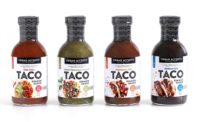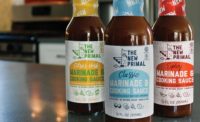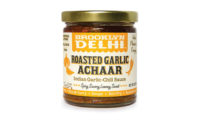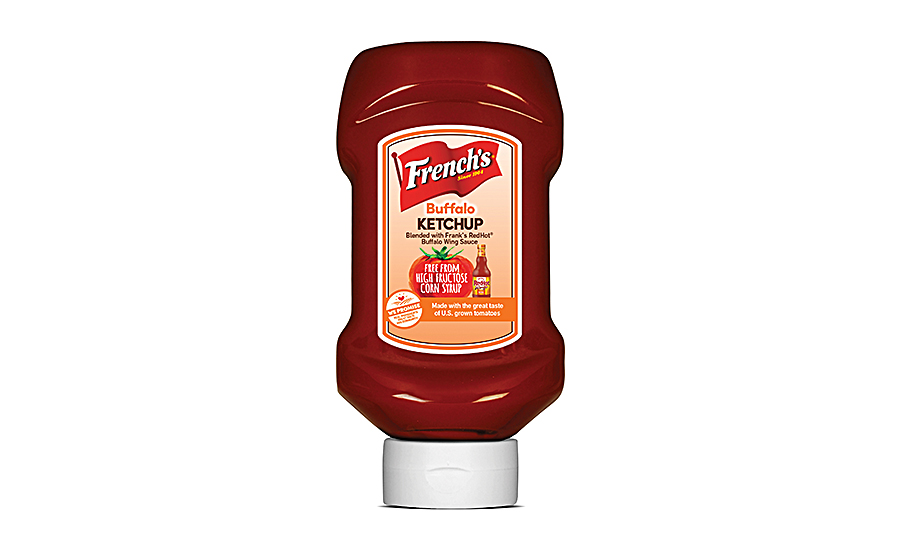New Sauces and Marinades
Consumers crave flavor but also value convenience, health benefits

Formulation Strategy: Flavor in, HFCS out

Where the Buffalo Roam: Ingredient integrity a plus.

New premium appeal with culinary craftsmanship.

Sriracha Hot Chili Sauce Ketchup

Crush Cubes, a line of flash-frozen, individually-sealed, pop-and-use herbs, butters, sauces and seasonings.

Mrs. Renfro’s Cheese Sauce






The good news is that consumers appear to be happy at home—cooking and creating culinary adventures with sauces, dressings, marinades and condiments. The challenge for manufacturers is to find the right formula for success and blend on-trend flavor with convenience and, sometimes, health as well.
Mintel Group Ltd., Chicago, examined marketplace opportunities and challenges in two December 2015 studies, “Cooking and Pasta Sauces, Marinades – US” and “Condiments and Dressings – US.”
Mintel suggests that the growing number of consumers interested in cooking—along with rising sales of poultry and seafood—likely contributed to sales growth in the overall category. Sales of cooking sauces, pasta sauces, and marinades grew 12% between 2010-15 and are anticipated to continue rising 13% between 2015-20, reaching $6.2 billion.
The marinades segment experienced the strongest growth of all segments, likely due to several innovative launches by major brands, said Mintel. From 2010 to 2015, sales grew 34% to $1.4 billion and are expected to rise 17% to $1.6 billion between 2015 and 2020. Growth occurred on account of manufacturers’ focus on developing products that are convenient and versatile, making the cooking process easier and less complicated.
Mintel found the top reason consumers give for not using cooking sauces, pasta sauces, or marinades is that they are eating less pasta, with nearly one third (31%) of consumers saying so. Struggling sales of pasta, resulting from consumers’ avoidance of gluten-containing and carb-rich foods, likely have led to flat sales of pasta sauces. Pasta sauce sales grew 3% between 2010-14, hitting $2.4 billion, while sales of pasta rose 4%, reaching $2.9 billion, during the same period, reports Mintel’s Pasta, Rice and Grains – US, April 2015.
Mintel predicts sales performance of pasta and pasta sauces will look similar to each other between 2015-19, with pasta and noodles sales expected to rise 9% and sales of pasta sauces anticipated to grow 7%. Most major brands of pasta sauces were either flat or experienced sales declines during the 52 weeks ending Sept. 6, 2015, with total MULO sales up only 0.9% during the period.
For the record, pasta makers aren’t holding back on new product development. For example, last year saw Victoria Fine Foods introduce an organic pasta sauce line. There are four varieties (Pomodoro, Tomato Herb, Arrabiata, and Toasted Garlic) packaged in 24oz size jars. The offerings are certified USDA Organic, non-GMO Project verified and gluten free.
R&B Foods Inc., a unit of Mizkan Americas, took the premium approach with new Bertolli Riserva Italian Sauces. Officials said artisanal ingredients take center stage in varieties such as Marinara with Parmigiano-Reggiano Cheese, Balsamic Vinegar with Caramelized Onions, Asiago Cheese with Artichokes and Porcini Mushroom with White Truffle Oil.
Back on the subject of sauces and marinades, Mintel shares the example of Stubb’s BBQ Sauce, Austin, Texas, which expanded its line to include both Cookin’ Sauces (classified by IRI as marinades) and Anytime Sauces. Mintel says both new lines likely contributed to a 21% company sales rise to reach $38.1 million during a 52-week period ending Sept. 6, 2015. Each of the Cookin’ Sauces comprise a cooking sauce, finishing sauce and spice pack in one package, while the Anytime Sauces can be used for basting, marinating and dipping. Such products meet consumers’ demand for convenience.
Consumers are equally likely to turn to a condiment, cooking sauce or marinade (23%, 25% and 25%, respectively) to customize a recipe, notes Mintel. Meanwhile, 78% of consumers who cook believe it is important for ingredients to be easy to find when selecting a recipe, according to Cooking Enthusiasts – US, November 2015.
One interesting take on ready-made convenience comes from Crushed Food Service, Westlake Village, Calif. Last year the company introduced Crush Cubes, a line of flash-frozen, individually-sealed, pop-and-use herbs, butters, sauces and seasonings. Packaging features a tray 24 quick-and-easy, portioned, ready-to-use cubes and one cube equals one teaspoon of wholesome ingredients. Varieties include Herbs (Garlic, Basil, Cilantro, Ginger, Parsley, Dill, Epazote, Shallots) Butters (Garlic & Herb Butter, Maple Butter) and Sauces & Seasoning (Pesto, Teriyaki, Chicken).
Speaking of creativity, Chelten House Products Inc., Bridgeport, N.J., ran away with two top awards from the food industry’s own Association for Dressings & Sauces. Last fall saw ASD members present both the 2015 Sauce of the Year Award and 2015 Dressing of the Year Award to Chelten House for its Organic Garlic Sriracha BBQ sauce and a Sweet Onion & Bacon Vinaigrette Dressing.
“Innovation is a must-have in today’s culinary environment,” said Jason Dabrow, Chelten House chief operating officer. “Seeing the hot trend in sriracha sauce and the staying power of BBQ sauce, we created an organic blend that we trust will give our retail partners another great taste to offer.”
Speaking of the dressing, he added, “Our retail partners look to us for innovative products. We took the continued, proven love for the flavor of bacon and combined it with the popularity of sweet onion.”
Dressings, Condiments
New product creativity is just what the doctor ordered for the dressing and condiment categories. Mintel says condiments and dressings have struggled to grow sales in recent years due to competition from other categories, such as dips and cooking sauces, as well as a lack of innovation.
Overall, the condiments category grew just 1% from 2010-15, reaching $6.9 billion in 2015, says Mintel. Many of the condiment category’s segments have remained flat over the last five years, aside from the ketchup and pickles, olives, and relish segments; the former experienced growth from innovation, while the latter benefits from positive health and freshness perceptions.
Mintel found the dressings category grew 6% from 2010-15 after a boost in 2012, reaching $2.6 billion in 2015. Embracing flavor innovation, BFY (better-for-you) product claims, and expanded usage occasions are all areas of opportunity for the dressings category to flourish.
Mintel notes, “There is some overlap in use of condiments, dressings, sauces, and marinades, as well as key reasons for using different types. While there is some overlap in usage among types of condiments, dressings and other sauces and marinades, there is opportunity to differentiate products with themes of customization or sophistication, or to expand on current usage.”
Mintel notes that free-from and low/no product claims appear most important to respondents, especially non-Millennials who may be more concerned about their health. The top claims they wish to see in an ideal condiment include no additives or preservatives, and low or no salt, fat, or sugar. Interest in free-from claims and foods has grown over time, especially as consumers remain concerned about their personal health.
Other desired claims include high protein and organic, following a general increase in consumer interest in these types of products, especially among Millennials. Protein may be an area of opportunity across segments for adding health benefits and increasing satiety. Organic claims often go hand-in-hand with free-from claims including non-GMO (genetically-modified organism), especially as the main driver for purchasing organic foods is the perception they are healthier than non-organics.
Prepared Foods has covered several related new product introductions. Tessamae’s All Natural, Baltimore, Md., entered 2016 with an announcement that its 14 dressings and five condiments are now 100% USDA Organic certified. Last year saw The French’s Food Company, Chester, N.J., introduce two new mustards (Classic Yellow Sweet, Classic Yellow Spicy) and enter a new category with French’s Tomato Ketchup. The new ketchup contains no high-fructose corn syrup, preservatives, artificial flavors and colors, or gluten, the company said.
Originally appeared in the March, 2016 issue of Prepared Foods as Liquid Bold.
Looking for a reprint of this article?
From high-res PDFs to custom plaques, order your copy today!












